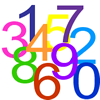Skip over navigation




Or search by topic
Number and algebra
Geometry and measure
Probability and statistics
Working mathematically
Advanced mathematics
For younger learners
Adventures with Numbers
 Number theory - the study of the natural numbers - is not usually studied at school, but it is a rich source of interesting problems which can lead to surprising results. The problems in this feature will offer you the opportunity to notice
patterns, conjecture, generalise and prove results.
Number theory - the study of the natural numbers - is not usually studied at school, but it is a rich source of interesting problems which can lead to surprising results. The problems in this feature will offer you the opportunity to notice
patterns, conjecture, generalise and prove results.
Many results can be explained by applying lower secondary school algebraic techniques, and many can also be explained using pictorial representations.
Number Rules - OK
Age 14 to 16
Challenge Level 





Can you produce convincing arguments that a selection of statements about numbers are true?
Take Three from Five
Age 11 to 16
Challenge Level 





Caroline and James pick sets of five numbers. Charlie tries to find three that add together to make a multiple of three. Can they stop him?
Always Perfect
Age 14 to 18
Challenge Level 





Show that if you add 1 to the product of four consecutive numbers the answer is ALWAYS a perfect square.
We are very grateful to the Heilbronn Institute for Mathematical Research for their generous support for the development of these resources.
You may also like
Patterns in Number Sequences
These resources are designed to get you thinking about number sequences and patterns.

